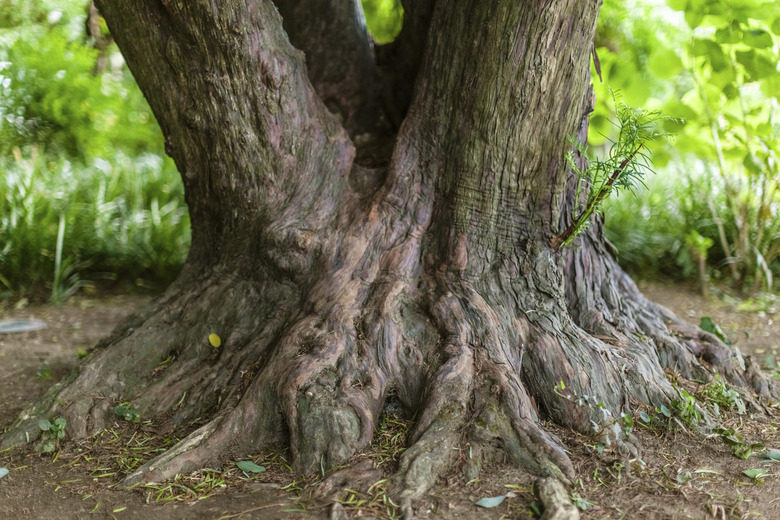When To Fertilize Oak Trees
More plants thrive on the planet without added fertilizer than with it, and, faced with thousands of plant products promising Jack-and-the-Beanstalk results, it's important for a gardener to keep this in mind. Native plants planted appropriately and growing happily do not need fertilizer, and this includes the mighty oak tree (Quercus spp.) Only troubled trees may benefit from a little help.
Step 1
The oak is by no means the only tree native to the U.S., nor is it the largest or tallest, yet something about its strength and vast, spreading branches captures the country's imagination. The oak is America's national tree, and native species grow in most states in U.S. Department of Agriculture plant hardiness zones 3 through 10. Individual trees can live 200 years or more, and nature provides everything they require for health and vigor.
Oak Nurture
Step 1
Nature nurtures oak trees in the wild by providing them a plant community that supports their growth, appropriate irrigation and the ideal mulch: leaf litter. Oak leaves, twigs and acorns that fall from the tree support microorganisms that protect the oak from disease. They also supply the nutrients the tree requires and a nutrient storage system. Their cation exchange capacity holds water and nutrients in the soil and releases them when needed. University of California Division of Agriculture and Natural Resources experts have determined that soil beneath native oaks is of a much higher quality and fertility than adjacent soil, thanks to decaying leaf litter. But if you remove the leaf litter, the soil enhancement ceases and soil quality decreases rapidly.
Step 2
- The oak is by no means the only tree native to the U.S., nor is it the largest or tallest, yet something about its strength and vast, spreading branches captures the country's imagination.
- University of California Division of Agriculture and Natural Resources experts have determined that soil beneath native oaks is of a much higher quality and fertility than adjacent soil, thanks to decaying leaf litter.
Feeding Cultivated Oaks
Step 1
Experts at Las Pilitas Native Nursery in California warn gardeners never to fertilize oak trees under any circumstances. On the other hand, trees that have been damaged by nearby construction or newly planted specimens may benefit from added phosphorus, according to experts at the Lady Bird Johnson Wildflower Center. A 3-inch layer of organic compost applied as mulch every spring — starting a few inches from the trunk and carrying through to the drip line — might be sufficient. Alternatively, broadcast a compost-based fertilizer that is 8% nitrogen, 2% phosphorus and 4% potassium around the root zone of the tree and water in slowly and well. Apply sufficient fertilizer to provide 2 to 3 pounds of actual nitrogen per 1,000 square feet of exposed soil surface.
Timely Fertilizer
Step 1
If you decide that your oak requires fertilizer, the most important time to provide the nourishment is early spring, just before new growth begins. If heat and drought conditions are truly harsh for the oak, feed once again in early summer. Keep in mind, however, that fertilizing a declining oak tree is generally not a good idea; instead, try to improve its soil by working in organic compost and be sure it gets occasional deep irrigation rather than regular shallow watering, which encourages root diseases. Never fertilize a tree suffering from root rot diseases, as this impedes recovery and even encourages the disease.
Step 2
- Experts at Las Pilitas Native Nursery in California warn gardeners never to fertilize oak trees under any circumstances.
- Keep in mind, however, that fertilizing a declining oak tree is generally not a good idea; instead, try to improve its soil by working in organic compost and be sure it gets occasional deep irrigation rather than regular shallow watering, which encourages root diseases.
